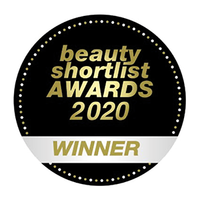When you buy a new car, you might notice that you see a lot more of the same car on the roads than ever before. This isn’t because a lot of people suddenly decided to start driving the same car as you, it’s simply that you notice the car more often. This is known as the Baader-Meinhof phenomenon and is a kind of perception bias in which you notice things more when they are new to you.
When customers first learn about CBD and hemp, they start to see it everywhere. Suddenly, everyone is talking about CBD and it’s available everywhere. First-time CBD users would be forgiven for thinking that hemp products are completely new to the market. In reality, hemp was one of the first ever cultivated plants and has been intertwined with human history since around 10,000 BC.
If you’re curious about the origins of your CBD product and how our relationship with hemp has changed over the years, read on to learn a little more about the history of hemp.
First known uses of hemp
The hemp plant is a fast-growing and fibrous plant. Throughout human history, all parts of the plant have been used for clothing, food and medicinal uses. Cannabis and hemp have also been important for religious ceremonies.
Hemp rope has been found in pottery dating back to 8000 BC. Around the same time, we’ve also found evidence that hemp seeds and oil were consumed in China. Some scientists have even suggested that hemp may have been one of the first cultivated plants, which led to the invention of agriculture and led to civilization itself.
Hemp seeds spread throughout the continents, including Asia, Europe, Africa, and later in South America. Religious texts refer to hemp as “Sacred Gress” or “King of Seeds”.
Hemp quickly became a staple in society and was used to make everything from clothes and shoes to ropes and paper. Canvas sails were once made from hemp fibres, and this is where we got the name “cannabis”.
Hemp in North America
Hemp was first introduced to North America in 1606. American farmers cultivated hemp to produce a wide range of products including paper, rope and lamp fuels. Abraham Lincoln used hemp seed oil in his lamps while George Washington grew hemp on his estate. In the 1700s, farmers were legally required to grow hemp.
Fast forward a few years and hemp was lumped in with its closest cousin, cannabis. While hemp was useful for a wide range of purposes, cannabis was quickly villainized and then outlawed.
Hemp is outlawed around the world
After prohibition was lifted in the United States in 1929, the first commissioner of the Federal Bureau of Narcotics told the US public that cannabis is “a devil drug”. This was despite his team of scientific advisors being unable to find any evidence that it is dangerous.
In 1937, The Marihuana Tax Act was passed in the United States. This tax made no distinction between hemp and cannabis, which led to a decline in hemp production. Later, in the 1960s, the UN Single Convention on Narcotic Drugs led to cannabis and hemp being banned in most countries.
Separating hemp and cannabis
It wasn’t until 1971 that the United Kingdom issued the first cultivation licence for growing hemp. In 2007, the United States issued their first licences for growing hemp to two Dakota farmers. And then, in 2014, President Obama signed the Farm Bill into law, which legally separated hemp from cannabis.
This paved the way for CBD production to begin. CBD is just one of the many uses for hemp plants. It is also used to produce textiles, paper, food, building materials and cosmetics. Cannabinoids have also been used in the pharmaceutical sector. Epidiolex and Sativex were the first medicines containing CBD to be approved for use in the UK.
In 2015, Love Hemp became one of the first CBD brands to launch in the UK, helping to pave the way for it to become a mainstream product. This was long before CBD hit the shelves of mainstream retailers such as Holland and Barrett in 2018.
The CBD industry was worth around $5.18 billion in 2021 and is growing every year. We are proud to be a pioneer in the sector, helping our customers to enjoy the benefits of a plant that has played an important role in human history.









